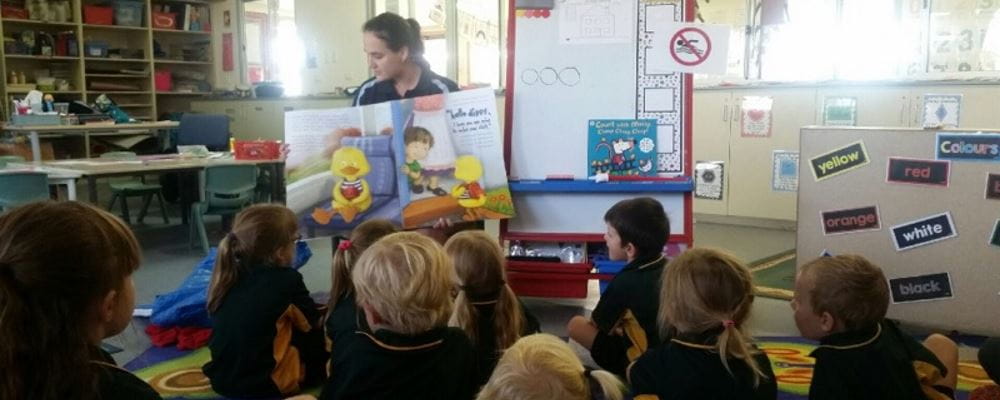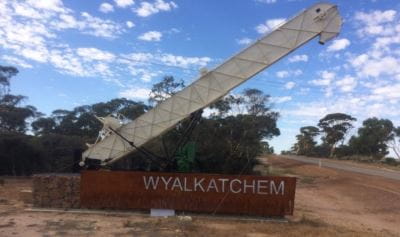
Keep Watch Co-ordinator Stephanie Green presenting a water safety talk to school children
A partnership to prevent drowning in the Wheatbelt
Injury is the leading cause of preventable death in children aged under five years in Australia. In Western Australia a child will die as the result of an injury almost once a week. Behind the numbers are hundreds of family members and friends affected by the untimely loss of young lives. The good news is that there are many simple things that can be done to prevent serious childhood injuries.
Kidsafe WA and the Royal Life Saving Society WA have visited the Wheatbelt this week, to deliver joint child injury prevention workshops. Staff have visited Moora, Wongan Hills, Goomalling, Wyalkatchem and Cunderdin to educate parents and health and community workers about child injury prevention.
The free information sessions have addressed the issues of keeping children safe at home, at play, around water and on the road and also provided basic CPR and first aid advice. Interactive safety presentations have also been delivered at three primary schools with students from kindergarten to Year 3.
 Anita Stepan, Program Officer at Kidsafe WA said “reaching regional WA is a high priority for us and for RLSSWA. Regional areas are over-represented in many child injury statistics and it’s important to speak directly to parents in these areas about how to keep their children safe.” The two organisations are supported by the Department of Health WA to conduct regular workshops in regional areas across the state.
Anita Stepan, Program Officer at Kidsafe WA said “reaching regional WA is a high priority for us and for RLSSWA. Regional areas are over-represented in many child injury statistics and it’s important to speak directly to parents in these areas about how to keep their children safe.” The two organisations are supported by the Department of Health WA to conduct regular workshops in regional areas across the state.
Drowning is the biggest cause of injury and death in the under-five age group. Stephanie Green Keep Watch Coordinator at Royal Life Saving Society WA said “On average, four toddlers drown each year in WA. In addition, a review of drowning in the Wheatbelt region revealed that toddlers aged 0-4 years are at the greatest risk of drowning, recording the highest rate of drowning of any age group in the region. Parents are urged to keep close watch of children around all types of water to prevent toddler drowning. Our presentations also educate parents about other strategies to keep their children safe around water, including the use of appropriate barriers and learning CPR.”
Other major injury concerns in young children include poisoning, falls and transport related injuries. Anita Stepan, Kidsafe WA, says “the best way to keep children free of serious injury is a combination of constant supervision,
changing the environment to separate children from hazards and learning first aid and CPR so you can respond in the event of an emergency.”